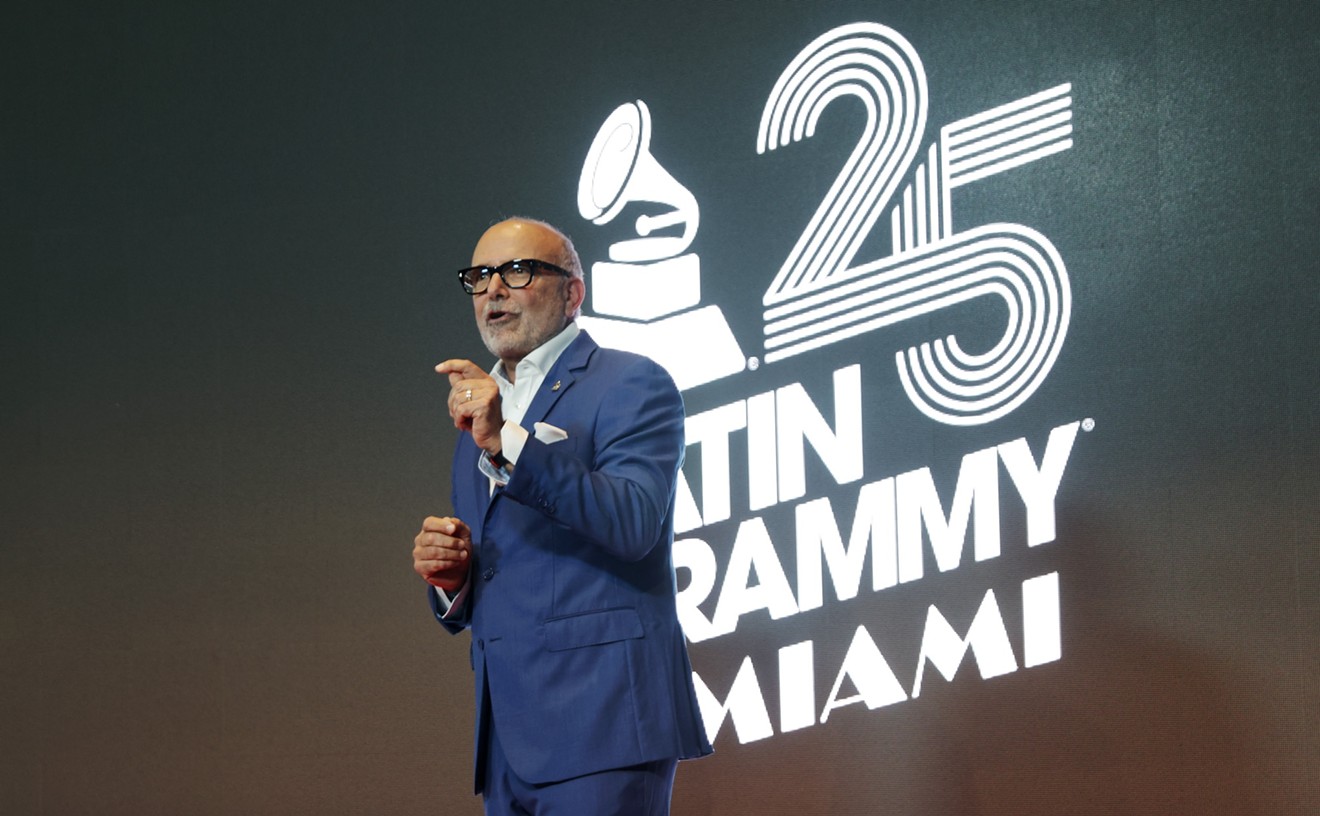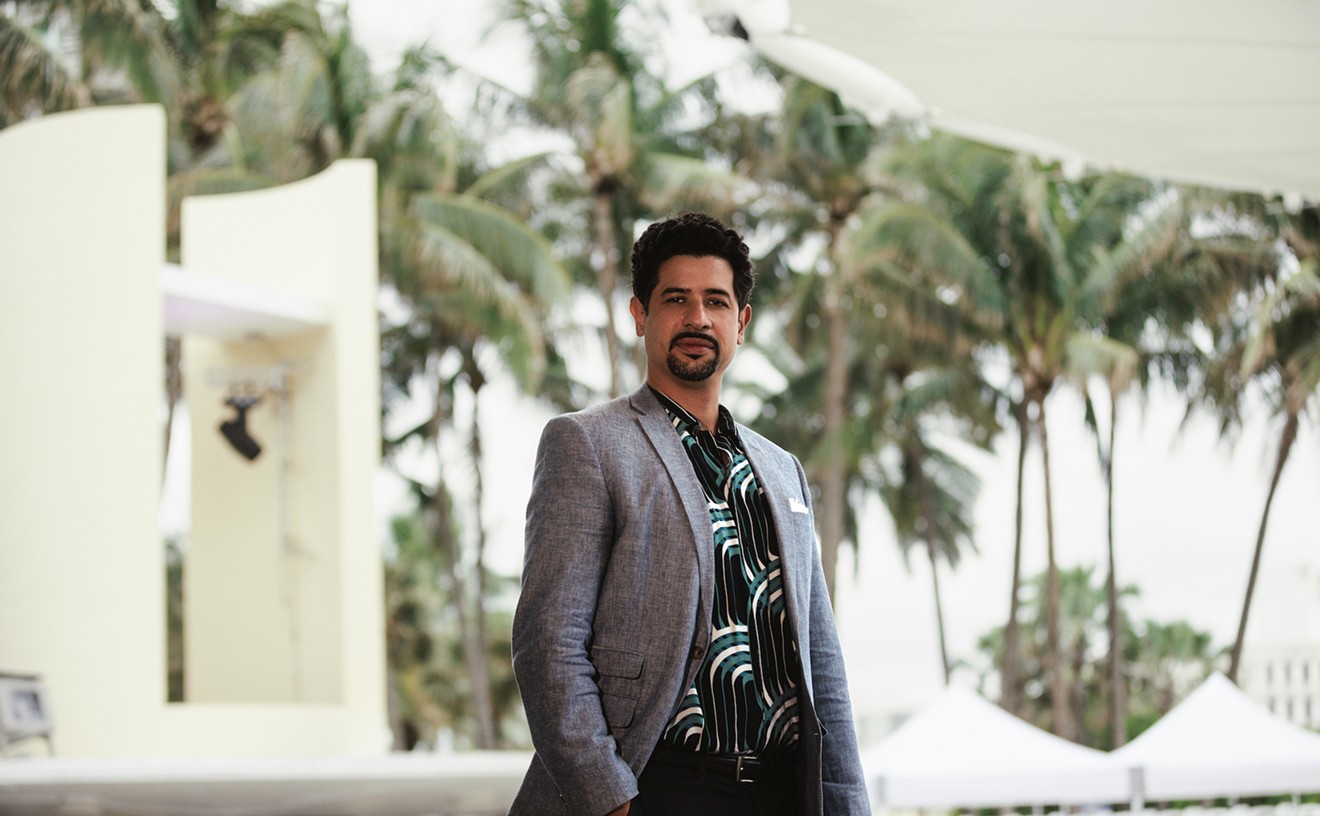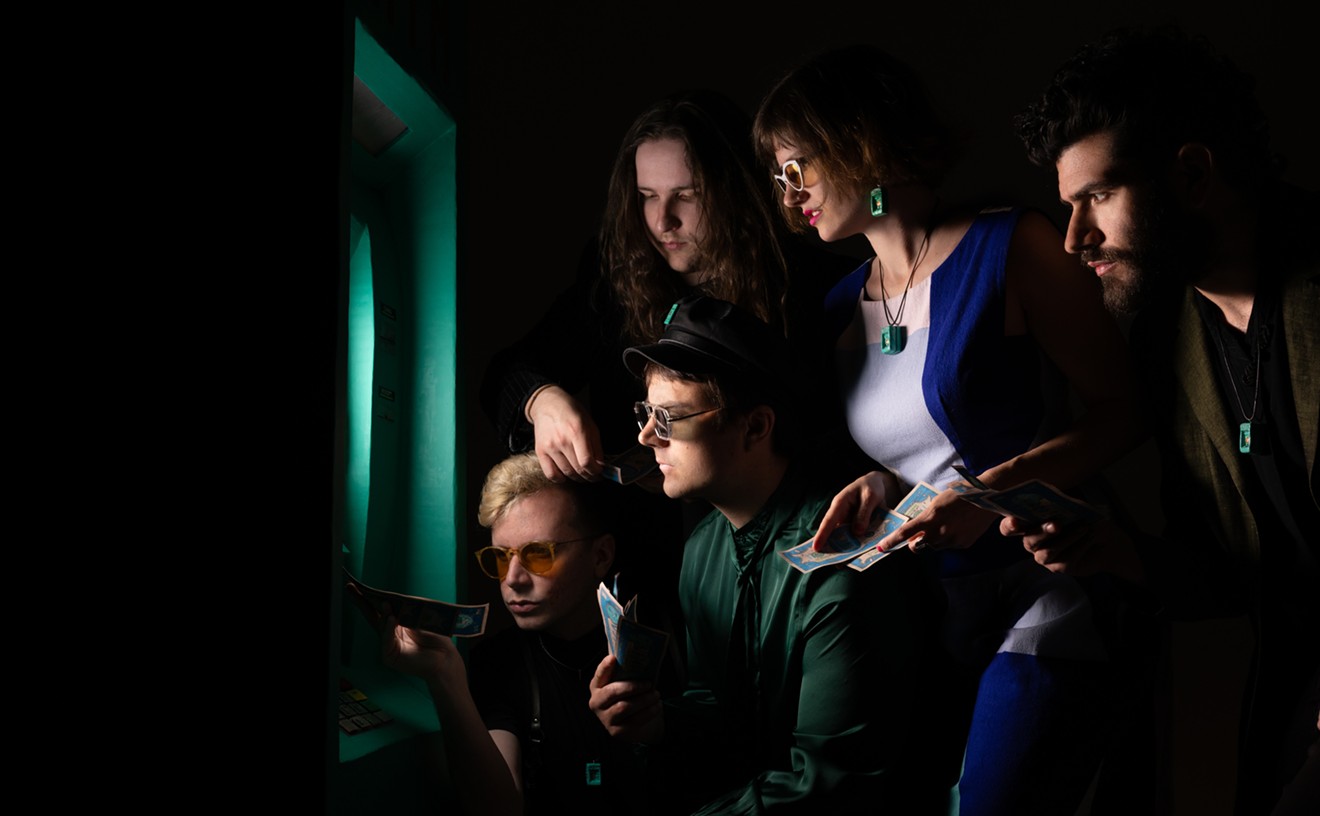Nearly three decades ago — in 1981 to be exact — two inimitable forces of indie nature collided to create a concoction of modern disco spirituals entitled My Life in the Bush of Ghosts. There was no "indie" then, per se. But the two men responsible for the album, David Byrne and Brian Eno, were so patently independent-minded that there may as well have been, with both as the genre's de facto kings.
Snap forward to now: Disco's long dead, and the de facto kingpins have indeed become indie's crown-holders. That's not to say that both Byrne and Eno haven't achieved mainstream success, mind you, or that neither has worked within the parameters of the mainstream marketplace. But they've both done so on their own terms. And with this month's release of their new joint album, Everything That Will Happen Will Happen Today, the two have not just continued the indie tradition — they've forced it to face the facts of a whole new present.
Like Ghosts, Everything incorporates elements of everywhere. But whereas the former relied heavily on found sounds to lend voices to the proceedings, the latter finds voices right within. According to Eno, the tracks themselves have been kicking around for years, but it took Byrne to turn 'em into songs.
And what a collection of songs is Everything. Perhaps you've heard the first single, the freely downloadable "Strange Overtones," which features a lovely wash of rhythm and gospel. Perhaps you've even streamed through the whole LP, and found solace by "The Lighthouse," or were reminded of The Talking Heads' 1983 classic "This Must Be the Place (Naïve Melody)" when you heard "Home." Perhaps you thought back to Ghosts itself when you encountered the swirl of "Poor Boy." If you haven't, get to it, because Everything is a charmed collection of introspection that is somehow devoutly optimistic, even as the walls come tumbling down.
Then again, when walls have been constructed by such stalwart builders, you kind of expect them to tumble down with a smile. Byrne may have made his name with Talking Heads, yet even at their big-suited best, he remained a man with his own hammer, willing to pound some sense into the soundtrack of our lives. Meanwhile Eno, from his early work with Roxy Music to his later production for groups such as U2, always seemed content to cut through the detritus with a buzz saw of his own devising. That both Byrne and Eno changed the way we listen without having to make a racket only amplified their accomplishments.
When Byrne and Eno first locked minds, it was over The Talking Heads' More Songs about Buildings and Food in 1978. But despite spawning the near hit single "Take Me to the River," the record didn't really establish the band among the masses. With Fear of Music in 1979, however, all that would change, most notably due to the track "Life During Wartime." It didn't rise as high on the charts as "River," but nevertheless became a dance floor classic, and set the stage for the polyglot, polyrhythmic swing that would later come with Ghosts. In fact, Ghosts was recorded in the downtime between Fear and its 1980 successor, Remain in Light, the last of the three Heads LPs Eno would produce.
Throughout the Eighties, Byrne seemed to follow his inner experimentalist, attracting a number of collaborators. Among others, he worked with Twyla Tharp on her ballet The Catherine Wheel, Ruichi Sakamoto and Cong Su for the score to Bernardo Bertolluci's The Last Emperor, and Robert Wilson on his opera The Knee Plays. During that decade, Byrne also started a world music label called Luaka Bop.
Eno, in contrast, had already delivered a string of experimental rock LPs in the Seventies, and basically invented the genre called "ambient." Thus in the Eighties, he turned his attention to production, most popularly with Daniel Lanois on such U2 megahits as The Unforgettable Fire (1984) and The Joshua Tree (1987). He also managed to get in on "The Prophecy Theme" for David Lynch's Dune, as well as unveil some stirring stop-motion videography shot from his Manhattan studio.
Now, in 2008, Everything finds both Byrne and Eno back where they belong, stirring soundly amid cacophony and pushing accidents to their greatest happening. So much has Byrne been energized by this collaboration, in fact, that he's seen fit to bring it on the road, even if he has to hold up the tracks by himself. (Longtime fans need not worry — there will be plenty of material from his back catalog as well.) This Saturday that road leads to Miami Beach's The Fillmore, and if you've ever in your life heard the call of a good song and an open mind, you'll be there right by its side. Consider yourself served.










